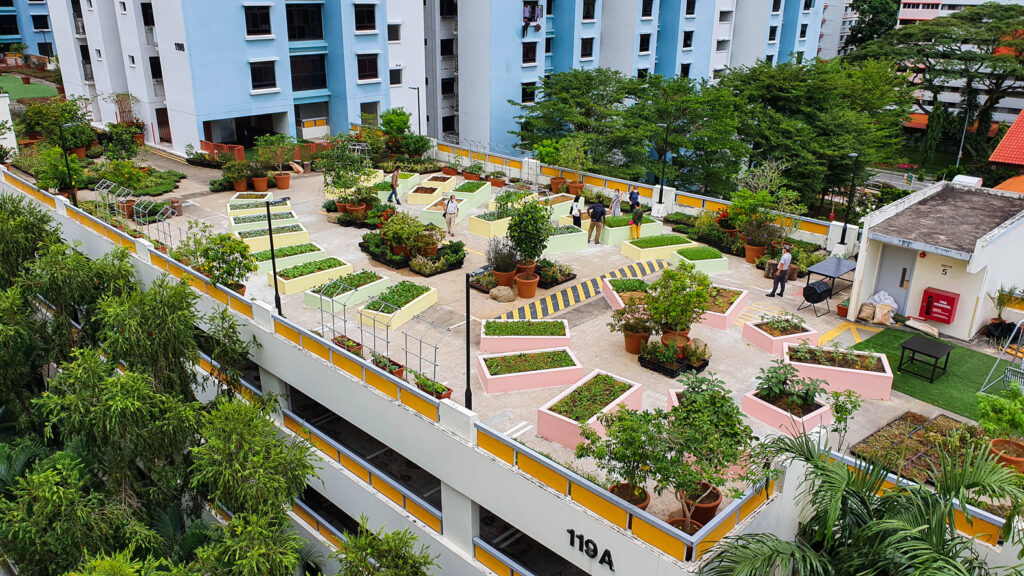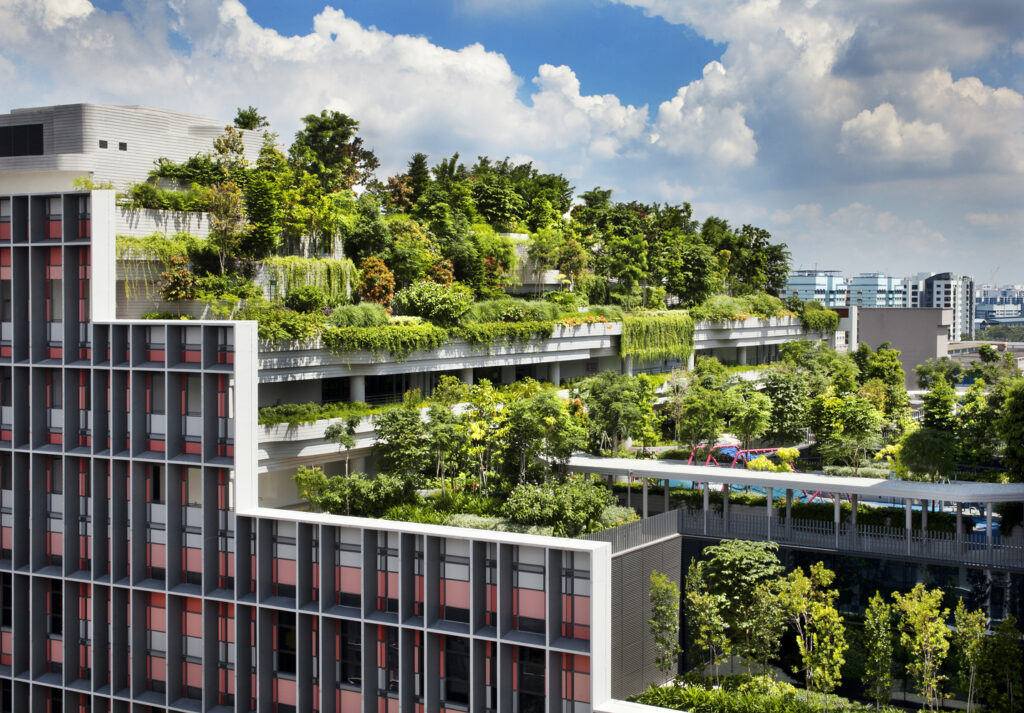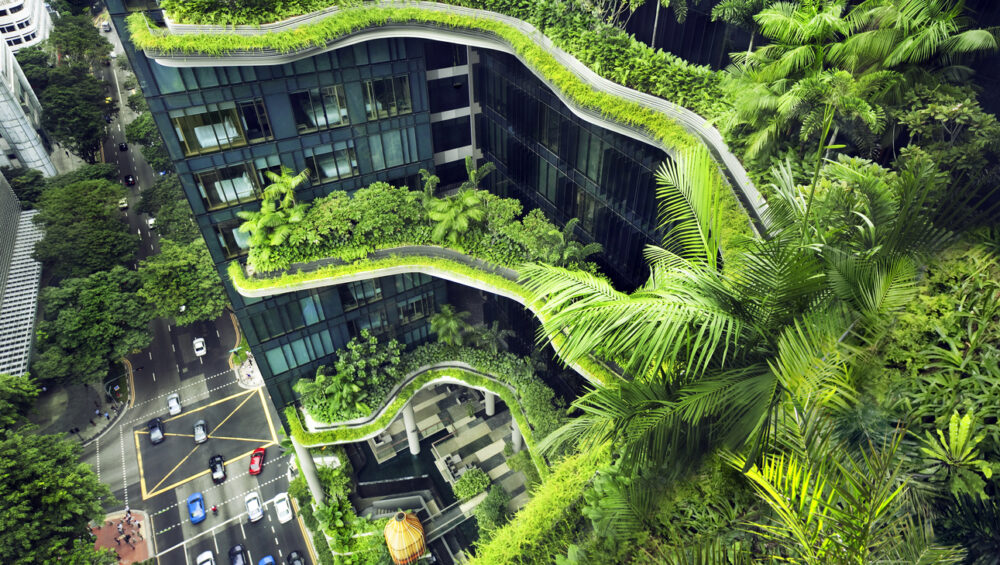Singapore as of late is continually building its reputation as a City in Nature, with Singaporean design long having a strong consciousness to acknowledge that green spaces matter. Urban planners and architects alike have taken a conscientious decision to weave in nature throughout the city as it continues to uproot new buildings and developments, incorporating the implementation of plant life in any form, whether it be through green roofs, cascading vertical gardens, or verdant walls.
This article will explore the pioneering actions taking place in Singapore to create a more biodiverse city and nation, and how this provides a view of how other major cities can adopt similar initiatives over the next decade to provide a blueprint for the future.

Landscape architects, Ramboll Studio Dreiseitl, and the Singaporean government statutory board, National Parks Board, have led the way in creating the biodiverse garden-filled city that Singapore is today. Additionally, the research of Yun Hye Hwang of the National University of Singapore and the Future Cities Lab is presently focused on exploring how to shape sustainable cities and settlement systems through science, by design.
Singapore is already leading the way in efforts to create a greener urban environment following the aftermath of COP26, and whilst its initiative to green Singapore was originally focused on giving the city-state a distinct and intentionally desirable image, today this approach is praised for its ability to tackle issues surrounding urban heat, assist with sustainable water management, and improve biodiversity in the city. Several projects have been implemented to continue dealing with these raising issues and providing sustainable design solutions to further the ‘greening’ of the city.
Bishan-Ang Mo Kio Park by Ramboll Studio Dreiseitl is one of Singapore’s most popular heartland parks. As part of a much-needed park upgrade and plans to improve the capacity of the Kallang channel along the edge of the park, works were carried out to transform what was once a utilitarian concrete channel into a naturalized river, creating new spaces for the community to enjoy.

The project is part of the Active, Beautiful, Clean Waters (ABC Waters) Program, a long-term initiative of Singapore’s Public Utilities Board to transform the country’s water bodies beyond their functions of drainage and water supply, into vibrant new spaces for community bonding and recreation.
Ramboll Studio Dreiseitl was also responsible for the developments at Jurong Lake Gardens, Singapore’s first national gardens in the heartlands. The 53-hectare Lakeside Garden aims to restore the landscape heritage of the swamp and forest as a canvas for recreation and community activities. The design is reminiscent of a conscious effort to bring back the nature that was once unique to the Jurong area.
Lastly for Ramboll Studio’s projects is Kampung Admiralty, a flagship project that brings together a multitude of programs under one roof. The architectural scheme builds upon a layered ‘club sandwich’ approach. The abundance of greenery present within the design of the housing development serves as an ideal venue for the community to relax and strengthen their relationships with one another, with tree planting strategies comprising the likes of biodiversity, foliage, and fruit trees.






